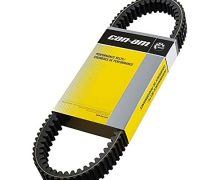Snowmobiles are well-built vehicles designed to withstand harsh winter conditions, but their performance is heavily reliant on the quality and dependability of individual components. The drive belt is a critical component that transfers power from the engine to the tracks. Learning more about how this part works, how to maintain it, and how important it is will help your snowmobile last longer and perform better. How Snowmobile Drive Belts Work The drive belt connects the engine’s power to the snowmobile’s track, allowing for smooth acceleration and consistent performance across many terrains. The belt, made of a blend of rubber and synthetic materials, provides a tight grip with minimum slippage, even in cold weather. As snowmobiles experience variable degrees of stress from various riding circumstances, the drive belt’s durability becomes critical. Snowmobile drive belts are designed to endure the high RPMs produced by snowmobile motors, although they do wear down with time. Excessive strain from aggressive riding, high speeds, and poor maintenance can shorten a drive belt’s lifespan. Maintenance Tips for Long-Lasting Belts The drive belt must be properly maintained to extend its life and ensure that your snowmobile runs smoothly throughout the season. Regularly examining the belt for symptoms of wear, such as cracks, fraying, or glazing, is essential. A glazed surface shows that the belt has slipped, resulting in overheating and reduced performance. Replacing the belt as soon as it shows signs of wear might save you money on future repairs. It is critical to verify that the belt is accurately positioned and tensioned within the snowmobile. Misalignment or incorrect tension can cause uneven wear and early failure. Proper storage also affects the longevity of your snowmobile’s drive belt. When not in use, avoid exposing the belt to high temperatures or direct sunlight,...

